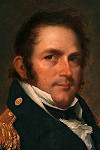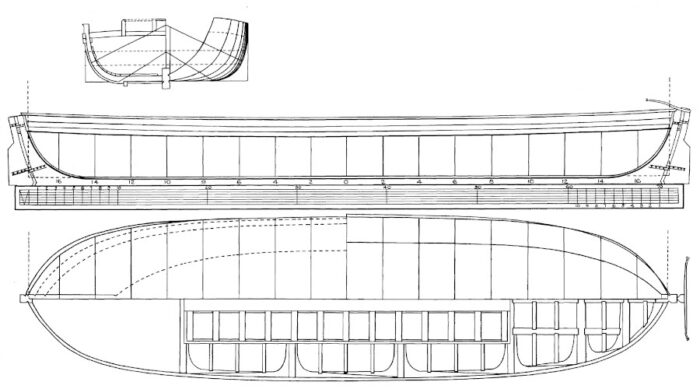
Over the last few weeks, we looked at Charles William Janson’s book The Stranger in America, and, in particular, what he saw and did on Capitol Hill. When we last saw him, he was looking at the Navy Yard and its surroundings. He finished up his section on the neighborhood by casting a jaundiced eye on an idea of the current President:
Mr. Jefferson, two years ago, adopted an idea of his own, in order to raise the credit of the American navy, and for the destruction of the powers of Barbary. This is, to build a number of small vessels of about 100 tons burden, to be called gun-boats, each of which is proved with too [sic] heavy pieces of ordnance – one at the stem, and the other at the stern. Though the inutility of these mockeries of men of war has been manifested on many occasions, yet the president persists in riding his naval hobby-horse, even in Kentucky; where several gun-boats are building on the river Ohio. One of them was nearly lost on a voyage to the Mediterranean – being, the whole voyage, to use a sea phrase, “wet and under water.”
Once again, Janson is – in the main – correct in his statements. These gun-boats were indeed an idea of Jefferson’s, and were designed originally to protect the long coast of the United States, where it would be prohibitively expensive to have large sailing vessels placed at regular intervals along the coast (or the distances would become too great) Instead, he wanted smaller boats. Lots and lots of them.
By February, 1805, fifteen of these small vessels had been built. While they had been built for coastal defense, there was also need for ships elsewhere – across the Atlantic, on the North African coast, where the United States had been at war with the Barbary States for several years. In the end, nine gunboats, in fact those numbered 2 to 10, set off across the ocean in the first half of May, 1805.

While most of them made the trip across, spending the latter part of the year off Tripoli, then overwintering in Syracuse on Sicily before returning to the United States, one of their number never returned.
Gunboat No. 7, under the command of Lieut. Peter Ogilvie, set off on May 14, 1805, from New York. Two other gunboats left with it that day. Six days later, its mast cracked, and the gunboat left the other two craft to return to New York, where it arrived on May 30. Repairs took some three weeks, and so on June 20t, it set off again – and was never heard from since.
Gunboats 4, 5, and 10 left from Hampton Roads on May 15t, and a week into their voyage encountered a “Gale of Wind” – as Midshipman John Henley (that’s him, above, much later in his career) of Gunboat No. 4 wrote in a letter a month later. His boat was separated from the others in the storm, and they had to make their separate ways to the safe harbor of Gibraltar.
In short, Janson gets it almost right, though the gunboats seem to have been quite a bit sturdier than he made them out to be. Nonetheless, one has to respect those young men who were willing to cram themselves into a fifty-foot vessel with 19 others for a transatlantic trip, a voyage that was indeed “wet and under water.”
